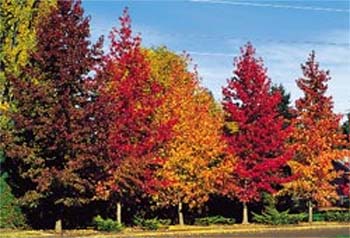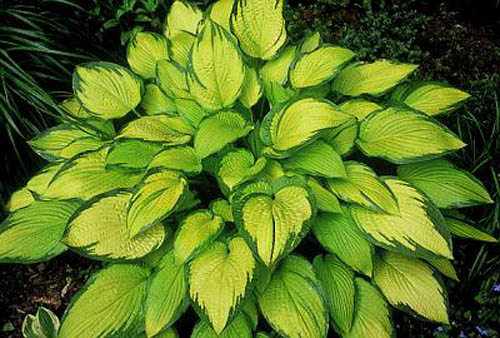We all have some part of our yard or gardens that we wish we could hide, maybe an old dilapidated two hole privy, a neighbors forgotten 1952 Nash Rambler, or an abandon oil tank. Things of character to be sure but an eye sore never the less.
Believe me I would rather have a Nash Rambler as a neighbor rather then a Suds Your Dudes, or heaven forbid, a Mickey D’s. Most of us consider our lawn and gardens an extension of our homes, where we can look for quiet and privacy . Unfortunately, we often take the easy way out, when our tranquility is threatened. We quickly throw up a stockade fence, suburbia’s Berlin Wall.
We soon realize though that our solution in itself can be quite unsettling. Like busy little beavers, we are soon at work trying to hide what we just built. While taking a little longer to develop, plants offer living privacy walls, which can be especially important in today’s neighborhoods where ranch style homes are lumped together with fast food joints and adult entertainment centers.
Using plants effectively will require careful planning on your part. First, you will have to decide if you are looking for single or multi season screening. If you are looking for year round appeal you will have to consider plants that flower, have changing foliage, offer winter color, bare fruit, or have interesting texture.
You will also have to decide how much time you can spend on plant maintenance. While a living border can require a lot of maintenance it does not have to. If your time is limited you definitely will not want a formal hedge or border which require constant pruning and care. Natural planting usually offer a more relaxing soft effect and require little time. A popular option, just catching on, is to rent potted plants which only require watering and can be easily moved around for special occasions.
Selecting the right size of plant is also critical. You would not want to use towering Oaks to hide a pool nor Firethorns to screen a hot tub, and surly Pygmy Barberries would not hide that Nash Rambler. While this may seem as just common sense, it is surprising how often we select plants we like and are familiar with and not what works best. We also often forget that most plants get bigger as they mature.
The last thing you need to evaluate, before plant selection, is the area in terms of size, sun exposure, soil, drainage, and proximity to utilities such as gas, water, electrical lines. You will also need to check on existing building codes. Also it might be nice to check with your neighbors and let them know what you are planning.
Once you have information about the site, and desired effect, you can decide what kind of plants meet your needs. Mixed plantings of evergreen and deciduous shrubs provide interest in many seasons. Deciduous plants provide more shade in summer but allow light to reach your yard in winter. Fruiting trees, bushes, and vines provide snacks for you and the birds and for your neighbors. Tall potted plants make a fast portable screen around a pool, patio, or deck. Ornamental grasses grow rapidly and are easy to maintain. Vines will quickly soften hardscapes and hide buildings.



